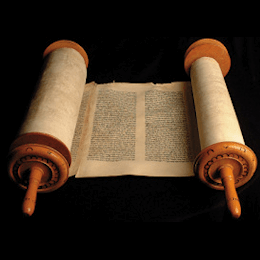Textus Receptus Bibles
Masoretic Text 1524
Old Testament
| 28:1 | לדוד אליך יהוה אקרא צורי אל תחרשׁ ממני פן תחשׁה ממני ונמשׁלתי עם יורדי בור׃ |
| 28:2 | שׁמע קול תחנוני בשׁועי אליך בנשׂאי ידי אל דביר קדשׁך׃ |
| 28:3 | אל תמשׁכני עם רשׁעים ועם פעלי און דברי שׁלום עם רעיהם ורעה בלבבם׃ |
| 28:4 | תן להם כפעלם וכרע מעלליהם כמעשׂה ידיהם תן להם השׁב גמולם להם׃ |
| 28:5 | כי לא יבינו אל פעלת יהוה ואל מעשׂה ידיו יהרסם ולא יבנם׃ |
| 28:6 | ברוך יהוה כי שׁמע קול תחנוני׃ |
| 28:7 | יהוה עזי ומגני בו בטח לבי ונעזרתי ויעלז לבי ומשׁירי אהודנו׃ |
| 28:8 | יהוה עז למו ומעוז ישׁועות משׁיחו הוא׃ |
| 28:9 | הושׁיעה את עמך וברך את נחלתך ורעם ונשׂאם עד העולם׃ |

Masoretic Text 1524
The Hebrew text of the Old Testament is called the Masoretic Text because in its present form it is based upon the Masora—the Hebrew, textual tradition of the Jewish scholars known as the Masoretes (or Masorites). The Masoretes were rabbis who made it their special work to correct the faults that had crept into the text of the Old Testament during the Babylonian captivity, and to prevent, for the future, its being corrupted by any alteration. They first separated the apocryphal from the canonical books, and divided the latter into twenty-two books, being the number of letters in the Hebrew alphabet. Then they divided each book into sections and verses.
There is a great difference of opinion as to when the Masoretic Text was written, but it was probably accomplished in the 10th -11th century. Several editions existed, varying considerably, but the received and authoritative text is that of Jacob ben-chayim ibn Adonijah, who carefully sifted and arranged the previous works on the subject. It was published in 1524.